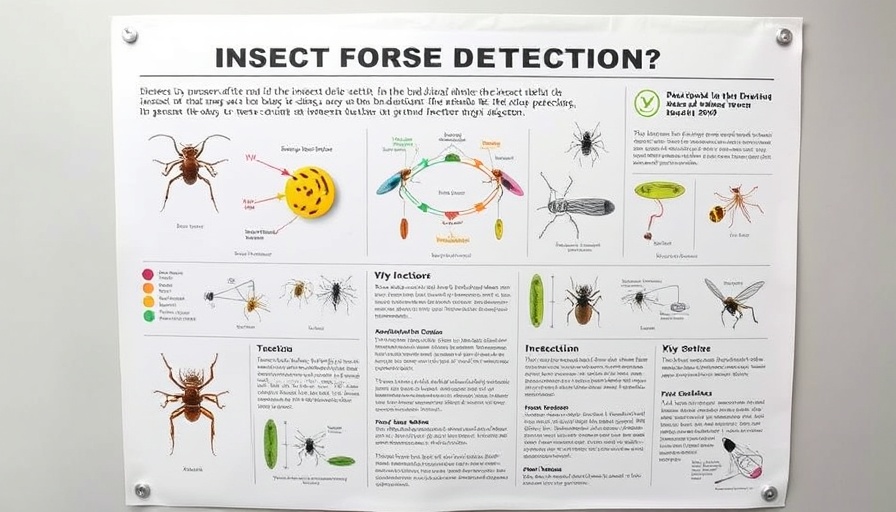
Incredibly Small, Incredibly Smart: The Force Detection of Blow Flies
Recent research published in the Journal of Neurophysiology highlights the fascinating mechanics of how blow flies (Calliphora vicina) navigate their world through an extraordinary ability to detect forces. Though these insects are lightweight, they possess specialized sensory organs in their legs that allow them to perceive even the slightest changes in force. This revelation not only deepens our understanding of insect biomechanics but also sets the stage for groundbreaking advancements in robotics.
How Do They Sense Movement?
Researchers from Marshall University and West Virginia University have delved into the anatomy of campaniform sensilla, strain sensors embedded in the tibia of a fly's hind leg. These specialized organs significantly contribute to the fly's posture and movement by encoding mechanical forces. Interestingly, the study found that these sensors are finely tuned; they respond not only to the force's strength but also to how quickly it changes. This adaptability helps flies maintain balance and precise locomotion, no matter the challenges they face in their environment.
The Science Behind Force Detection
As Dr. Sasha Zill explains, understanding how these lightweight insects monitor force dynamics sheds light on a universal strategy that many organisms, including larger species, share when it comes to movement. The researchers employed a mathematical model that accurately replicated the sensory responses observed in blow flies. This suggests that perhaps all species have evolved similar mechanisms for force detection, highlighting the interconnectedness of life across sizes and forms.
Applications in Robotics: Mimicking Nature
The insights gained from studying these tiny insects could revolutionize the field of robotics. Drawing from the principles of biological force detection, engineers may develop next-generation walking robots capable of better stability and adaptability. Imagine robots that not only learn from their environment but can also interpret subtle changes in their surroundings, much like a blow fly does when navigating complex terrains.
Conclusion: Nature as Our Guide
The remarkable ability of blow flies to detect forces, despite their size, illustrates the wonders of the natural world and its untapped potential for technological innovation. As we continue to study these creatures, there lies an exciting possibility for creating more effective robotic systems that borrow from nature's original designs. The future of robotics may not just be about creating machines; it might also be about mimicking the elegant solutions found in nature.
 Add Row
Add Row  Add
Add 




Write A Comment